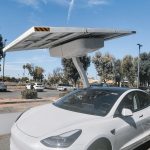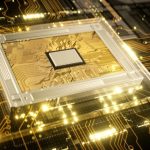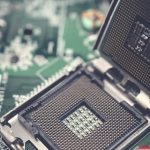South Korea is preparing to welcome Tesla’s Full Self-Driving (FSD) Supervised system, opening new opportunities for the country’s automotive landscape. Tesla Korea announced the arrival of FSD Supervised through a video post, highlighting the technology’s ability to navigate urban roads with minimal driver intervention. The feature could reshape how local drivers perceive driving automation while also surfacing questions about regulation and deployment strategy in a distinctive market. As autonomous driving initiatives gain momentum globally, the South Korean launch provides insights into Tesla’s strategies for entering highly regulated regions. Consumer expectations also continue to rise, especially with the popularity of the new Tesla Model Y in the local market.
Earlier announcements regarding FSD releases focused mainly on North America and limited international pilots. South Korean demand for Tesla vehicles has accelerated rapidly, but implementation of advanced driver assistance systems has lagged due to regulatory and certification challenges. With previous expansions, Tesla followed a phased approach, navigating differences in road safety rules and compliance in each country. Other automakers have also faced government scrutiny when introducing autonomous technologies, sometimes resulting in project delays and modifications to system capabilities to meet national standards. The current initiative signals an evolution in how Tesla addresses market-specific barriers.
How Does FSD Supervised Operate in South Korea?
FSD Supervised is designed to assist drivers with lane changes, intersection navigation, and parking, while still requiring driver oversight. Local demonstrations showcased the system operating on South Korean streets, hinting at ongoing test drives prior to the public announcement. Tesla’s approach differentiates between supervised and unsupervised modes—while the supervised version mandates human attention, the fully autonomous unsupervised type is reserved for services like Robotaxi in select regions.
Which Tesla Models Will Support FSD Supervised?
Initial deployments of FSD Supervised are expected to focus on U.S.-manufactured Tesla vehicles. These models benefit from the Korea-U.S. Free Trade Agreement, simplifying adherence to local safety regulations. Over 80% of Teslas sold in South Korea originate in China, but imported vehicles from China must still undergo additional compliance checks before receiving FSD functionality. Sales of the Tesla Model Y have surged by nearly 93% year-on-year, driven by its pricing and features, contributing to the company’s growing presence.
What Challenges Could Affect the Rollout?
Bringing FSD Supervised to South Korea poses regulatory and legal questions. Domestic road and safety laws may require adaptation or clarification to accommodate autonomy features. As one industry analyst commented,
“Since the supervised FSD is a technology that assists driving, its introduction in South Korea is technically feasible. However, potential conflicts with domestic road laws and safety standards are a concern.”
Vehicles produced in the U.S. will likely meet South Korean approval more quickly than their Chinese counterparts. Another statement from Tesla Korea reinforced the company’s outlook:
“We are working closely with regulators to ensure a safe and compliant launch of FSD Supervised in South Korea.”
Decisions made around the rollout of FSD Supervised are likely to influence broader acceptance of autonomous driving solutions in South Korea. Success in overcoming regulatory barriers could clear the path for further FSD enhancements, expansion to locally manufactured vehicles, and eventually even unsupervised driving options. Industry trends point toward an incremental integration strategy, with real-world feedback informing each development phase. For consumers, awareness of FSD’s capabilities and its legal boundaries will be essential as the technology becomes more widely promoted and available. Notably, the case of South Korea underscores the importance of balancing technological innovation with local compliance and safety considerations. Those interested in adopting semi-autonomous driving features should review safety guidelines and stay updated on how regulations shape system deployment before participating in the FSD Supervised program.










